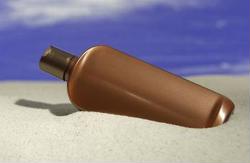Almonds
Almonds
are one of the few foods that provide high levels of Vitamin E, a nutrient with
rich oils that moisturize dry skin to prevent dull, ashy-looking skin.
Avocados
Avocadoes contain EFAs like Omega-3 and Omega-6. As is the case with salmon, avocadoes help keep skin well-hydrated and radiant.
Avocadoes contain EFAs like Omega-3 and Omega-6. As is the case with salmon, avocadoes help keep skin well-hydrated and radiant.
Berries
Berries are packed with antioxidants that protect against the specific free radicals that damage skin. Some of the best berries include blueberries, strawberries, blackberries, raspberries and cranberries.
Berries are packed with antioxidants that protect against the specific free radicals that damage skin. Some of the best berries include blueberries, strawberries, blackberries, raspberries and cranberries.
Green tea
Because of its anti-inflammatory effects and high antioxidant content, green tea is a wonderful food for the skin. The leaf of green tea is especially potent at guarding against sun-related skin issues like hyperpigmentation.
Because of its anti-inflammatory effects and high antioxidant content, green tea is a wonderful food for the skin. The leaf of green tea is especially potent at guarding against sun-related skin issues like hyperpigmentation.
Mangos
Mangoes have more than 80% of your daily requirements for vitamin A, a nutrient critical to the repair and maintenance of skin cells. Vitamin A is especially important to help prevent skin dryness and flaking.
Mangoes have more than 80% of your daily requirements for vitamin A, a nutrient critical to the repair and maintenance of skin cells. Vitamin A is especially important to help prevent skin dryness and flaking.
Mushrooms
Fungi are rich in riboflavin, a B vitamin involved in skin cell maintenance and repair. The riboflavin in mushrooms helps prevent scars and skin discoloration associated with acne.
Fungi are rich in riboflavin, a B vitamin involved in skin cell maintenance and repair. The riboflavin in mushrooms helps prevent scars and skin discoloration associated with acne.
Salmon
Salmon is high in EFAs (essential fatty acids) such as Omega-3. EFAs are called “essential” because they are not made by the body and must be consumed through the diet. Omega-3 and other EFAs help to reduce inflammation in the body and skin, as well as keep skin hydrated, soft and smooth.
Salmon is high in EFAs (essential fatty acids) such as Omega-3. EFAs are called “essential” because they are not made by the body and must be consumed through the diet. Omega-3 and other EFAs help to reduce inflammation in the body and skin, as well as keep skin hydrated, soft and smooth.
Whole grains
Whole grains contain high levels of B-vitamins, which assist with skin’s renewal processes. B-vitamins are involved in the production of new skin cells that replace old, worn-out or dead cells during a process known as cellular turnover.
Whole grains contain high levels of B-vitamins, which assist with skin’s renewal processes. B-vitamins are involved in the production of new skin cells that replace old, worn-out or dead cells during a process known as cellular turnover.
Tip: Whenever possible, choose whole fruits
over fruit juices, since you will get all the healthy vitamins and antioxidants
without the added sugars found in most fruit juices.








